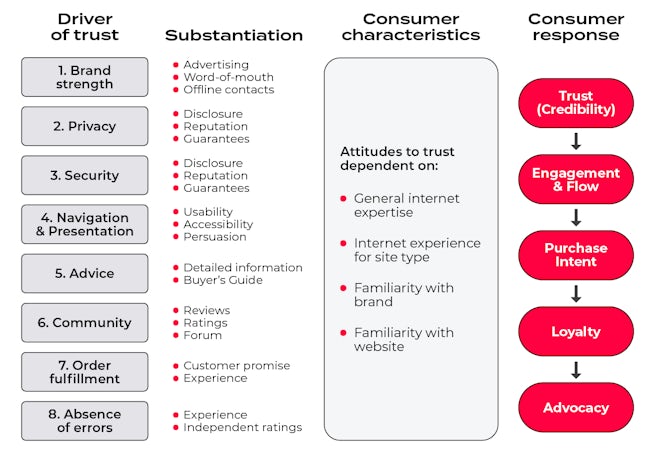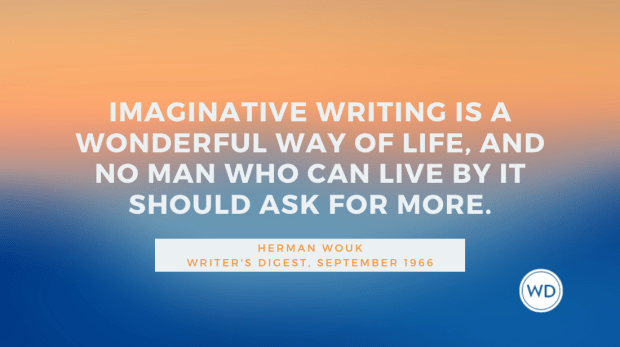https://econsultancy.com/12-best-practice-guidelines-for-ppc-landing-pages/
A landing page is a page on a website that has been specifically created for users referred from a paid search campaign.
These pages are intended to maximise conversion rates, whether that means making a sale or capturing a lead. For B2C this is typically an online order, and for B2B it is data capture, where a site visitor fills in an online form to generate a marketing lead.
Landing pages can be a series of related pages within an existing site structure, or they can be a microsite specifically set up for a campaign, typically with its own campaign URL, also known as a ‘CURL’.
Landing pages are important not only because they need to be relevant and efficient to convert visitors, but also because they affect the site’s Quality Score, which has a direct impact on minimum bid prices. Google will penalise sites where the content is not relevant to the search that led a user to the landing page in question. Relevance is determined by whether page titles, heading and body copy match the keywords or pages.
To be effective, landing pages need to combine the following in order to improve the user experience and increase conversion rates:
- Usability
- Accessibility
- Persuasiveness
- Ability to develop trust in the brand.
It is possible to distil best practice from these disciplines into the heuristics that form the 12 guidelines detailed below. Experienced search engine marketers apply these concepts all the time.
Before running through best practice guidelines, it is worth bearing in mind that a particular constraint related to accessibility is the platform used to access the landing page. Take a look in the website analytics package to discover which devices and browsers (including which versions of those browsers) are being used by visitors.
Also be aware of the most popular screen resolution for visitors. How much of the page is typically seen and how their browser renders it are two huge elements that can affect the campaign results, and so it may be worth segmenting tests accordingly.
Guideline 1: Deliver relevance
Relevance is key to successful marketing communications in all media, but especially online where users decide a website’s relevance in the blink of an eye.
Where the communication is not relevant, visitors will ignore it or filter it out, whether it is a result in the natural search listings or Google Ads. It is important to not only measure visitor volumes and conversion rates but to really understand where and why websites are failing to deliver relevance. This can be indicated by low clickthrough rates on a Google Ads-hosted ad, high bounce rates from a site landing page or high abandonment rates from the shopping basket funnel.
Unlike casual visits by browsers, paid search visitors arrive on a landing page with a directed goal or intention in mind. This means that landing pages must instantly demonstrate relevance to help visitors achieve that goal. Manage expectations accordingly.
Clear headlines quickly show relevance and also invite the visitor to scan down the page. Show the visitor they have selected the right place to find the brand, product, deal, information or experience they are looking for, and indicate this using the headline.
Other key ‘relevance messages’ should be easy to scan by choosing the right headlines and with different panels drawing the eye to the different areas. Tests show that larger fonts tend to generate higher response rates.
Since hitting the landing page is often a customer’s first experience of a brand, it is worthwhile answering the basic questions that they will likely have about the company. These include: ‘Who are you?’, ‘What do you do?’, ‘Where are you based?’, ‘Should I trust you?’, and so on.
Questions might be somewhat obviously answered on the homepage. If they are not, does the navigation on the landing page allow them to be answered? Standard menu options such as ‘About Us’ or ‘Contact Us’ can achieve these, even though best practice suggests that the only link an advertiser would really want on a landing page is a prominent ‘Buy’ or ‘Apply Now’ button.
Guideline 2: Integrate with referral source(s)
The customer journey to a website started elsewhere. Delivering relevance requires consistency with what the customer has already read elsewhere, and the content must meet the expectations raised by other communications.
In terms of message, branding and creative, the landing page needs to be consistent with other channels, i.e. offline ads, interactive ads and emails.
The key message on the landing page needs to be consistent with the key message of the referral source. Use the headline to clearly show the visitor they have selected the right place to find the brand, product, deal, information or experience they are looking for.
As an example, an advertiser pays for a consumer to click through to a landing page from Google Ads. Imagine they are advertising on ‘iPad deals’. A searcher will expect to see a big picture of an iPad, a headline that matches the ‘iPad deals’ call to action and so on.
To ensure paid search landing pages are tailored and relevant to a searcher’s query in this way, they will need to pass Google’s ‘relevance’ checks, which factor into the ad Quality Score.
However, many landing pages are generic category pages, perhaps featuring a range of products unrelated to their initial search. Many will simply hit the back button when faced with page clutter not related to the call to action from the Google Ads ad. Advertisers should avoid this, especially when paying for such traffic.
Guideline 3: Provide sufficient detail to support the response decision
A commonly recurring theme in landing pages, and one that does not often serve the advertiser well, is the lack of sufficiently detailed information that would make the visitor commit to a decision. At the same time, it is important not to make the page too cluttered. Getting this balance right is key to successful landing page design.
The following tips and tricks can help with landing page design:
- To help determine the right level of information, best practice is to think about different demographic profiles of website visitor to identify typical information required and the gap relative to what an advertiser is delivering.
- Also think about the level of knowledge the user has – do the technical product descriptions make sense?
- The use of well-designed tabs is an efficient way of adding more detail to a page with a design streamlined for increased response, i.e. an accordion layout of FAQs.
Guideline 4: Start the user on their journey
The design should make the next step clear and minimise the number of clicks required during sign-up, since every extra click required will generally reduce overall response by 10%.
It is best practice to include the initial data capture on the first page, to encourage engagement and to get the customer started on their conversion path.
If the response mechanism is on another page, then use multiple calls to action to gain responses, since some visitors will respond to images and others will respond to text hyperlinks. Make all images clearly clickable, for example, by making them look like buttons.
The words used to form calls to action are critical in creating a scent trail that users of the site can follow. An effective scent is delivered where the words match what the user is thinking – or what they want to know or achieve.
For more on personas and scent trails, the book Call to Action: Secret Formulas to Improve Online Results by Bryan and Jeffrey Eisenberg is highly recommended as further reading.
Another useful reference source is the Marketing Experiments website. It has a handy blog post on landing page optimisation, providing links to 36 articles and resources related to landing pages.
Guideline 5: Use the right page length
This is a difficult one to give guidelines on. The right page length is one that minimises the knowledge gap between what the user wants to know and what they are told. Do not approach landing page creation with a fixed view of what page length seems appropriate. Instead, sit down and define the goals for the page, the type of visitor that is being targeted and the content and calls to action that are needed to satisfy the needs of these visitors and get them to take action.
Some designers would suggest that content must fit on one page that does not require scrolling at 1024 x 768 resolution. However, short copy is often inconsistent with Guideline 1: Deliver relevance. Tests have also shown that landing pages can be scrollable without adversely affecting conversion rates – users will happily scroll if pages appear scrollable.
Good practice suggests that it is best if key information (and the response mechanism, such as the ‘Buy Now’ button) is positioned above the fold. That said, there is some interesting psychology at play with the location of the key CTA. Logically speaking, the CTA should appear at the point when the visitor has enough information to be ready to take the action. If an advertiser is selling something complex that requires proper explanation, a CTA at the top before the visitor knows what is being offered to them might discourage people from clicking.
An excellent blog post by Daniel Burstein on Marketing Experiments outlines common CTA errors.
To summarise, there is a balance to be struck between keeping it short enough for impulsive readers, while going into enough detail for readers who want to know more. The idea is to provide just enough information for the visitor to want to take the next step. B2B websites might need to provide a lot more information than a B2C website.
If an advertiser is using a personality tracking software (such as VisualDNA), they may be able to present different content on landing pages based on a prospect’s personality profile, and deliver more targeted messages.
Of course, the only way to get the length right is to test. More guidance on running successful tests can found in Section 4 of Econsultancy’s Paid Search Optimisation Best Practice Guide..
For further reading, see the Econsultancy blog post by James Gurd of Digital Juggler, Short vs. long form: hitting the target with landing page depth.
Guideline 6: Use meaningful graphics
Graphics must be consistent with the campaign and generate empathy with the audience. Do not underestimate the importance of quality graphics. Stock graphics rarely work. How graphics influence conversion rate is highly variable, so advertisers are best advised to test, tweak, and test again.
Guideline 7: Consider removing menu options
This is another guideline that tends to cause disagreement. Removing menu options will often increase conversion rate since less choice of where to click is offered.
However, those visitors who do not respond may be left with a poor impression as they could not find an option relevant to them. This tactic will certainly prevent them from browsing other parts of the site. Often a compromise is best, with a reduction in menu options to top-level options only. Make sure the menu options are relevant to the page and do not distract visitors from the purpose of their visit.
Guideline 8: Consider using a ‘flowable’, fluid or liquid layout design
This layout will change responsively based on the device the user is visiting from. This maximises page real estate at a given resolution such as on mobile devices. Although showing more products above the fold can work well for retailers, it does require some sacrifice in that control of design is lost.
Guideline 9: Remember search marketing
There are three aspects to this. Firstly, an offline campaign such as TV advertising will lead to people searching on a brand or the campaign tagline. Ensure paid search is being used to direct visitors to the relevant pages particularly during the campaign. Use paid search to ensure the site is visible.
Secondly, if the page is integrated into the website and will be used in the long term, optimise it for relevant search queries using the SEO techniques covered in Section 9.1 of Econsultancy’s Paid Search Optimisation Best Practice Guide on integrating paid search with SEO.
Thirdly, a strong focus on relevance should be employed. Do not forget that landing pages for paid search will have an impact on how much is paid, and how well an advertiser can rank, based on Quality Score.
Guideline 10: Remember the non-responders
Provide a choice for those who do not respond despite carefully crafted landing pages. Provide a reasonably prominent (and very trackable using Google website call tracking) phone number or perhaps a call-back/live chat option. Also provide some options for them to browse or search elsewhere on the site.
An essential for retailers is enabling visitors to sign up to the newsletter. If someone clicks on a paid search ad and visits a website, they are obviously interested in what is on offer. If they are not yet ready to purchase, let them subscribe to a newsletter, improving the chances of converting them in the future via other marketing channels.
Guideline 11: TIMITI
TIMITI is a term coined by Jim Sterne, author of Web Metrics. It stands for: “Try It! Measure It! Tweak It!”
The basic premise is that online content effectiveness should be reviewed and improved continuously (rather than as a periodic or ad hoc process). What worked at the start of the year may not work as well by the end of the year.
The only way to be sure of what works for an audience and market is to conduct structured tests such as usability studies, A/B testing or multivariate testing. With Jim in mind, it is worthwhile reiterating one small point: having the right web analytics tool is vital to testing.
Guideline 12: Consider landing page longevity
Landing pages are often used for short-term campaigns. When this is the case, carefully manage when the campaign expires, so that any links to the landing page can be removed in good time. Consumers hate seeing out-of-date offers, and visitors loathe typing in URLs that are no longer valid.
Use of a custom 404 error page or a 301 permanent redirect is essential to manage these problems gracefully. If there are old pages in the search engine index, add the ‘noindex’ meta tag to cover all bases.
Finally: Promote trust with the end user
In addition to the above 12 functional guidelines, think carefully about how to promote trust in the brand to the end user. Review and test how to persuade visitors that an advertiser’s online brand is to be trusted in order to maximise conversion. Figure 1 illustrates the different issues to consider.
Figure 1: Different factors that influence trust in an online brand

Source: Econsultancy
A selection of methods for incorporating messaging and images relating to trust that should be trialled on a landing page include:
-
Security: Padlocks in the address bar of a browser (when a website has a valid SSL certificate) still make a difference, as can accreditation schemes such as the much-maligned Hacker Safe scheme.
-
Privacy: A simple version of a privacy statement such as ‘we will not share your data with anyone’ can help conversions, as can accreditation through providers such as TRUSTe.
-
Testimonials: For example, from customers or simply a number of users.
-
Customer ratings: Add these to descriptions for individual products.
-
Scale: Awards such as the Hitwise badges indicate popularity within a sector.
The post 12 best practice guidelines for PPC landing pages appeared first on Econsultancy.


